Agrivoltaics is an incredibly creative method for combining energy production and agriculture, but like most methods, it comes with its advantages and disadvantages.
Nowadays, solar photovoltaics is one of the trending clean energy sources. Everyone harvests energy from the sun, from household energy users to the commercial sector, because it’s lucrative and easily accessible.
Similarly, farmers are looking for sustainable, alternative methods to generate quality produce while generating a profit.
And so we arrive at the use of agrivoltaics, the transformation of arable land into hybrid solar and agricultural strongholds.
Let’s dive headfirst into the advantages and disadvantages of agrivoltaics!
Table of Contents
What Is Agrivoltaics?
In a nutshell, agrivoltaics combines a solar system with food crops on the same land.

Source: agritecture/NREL
The idea is simple — maximize land utilization by producing energy from PV systems while performing traditional farming.
How Does Agrivoltaics Work?
Before we dive into the inner workings of agrivoltaics, let’s take a brief look at the nature of crops.
Direct Solar Irradiation Requirement
Almost every crop requires three elements to perform photosynthesis — direct solar irradiation, water, and carbon dioxide. However, some crops require more or less of these elements than others.
Plants that require more sunlight won’t be able to grow beneath PV modules (rice, wheat, etc.) So, in this instance, it’s best to use partial-shade plants.
Effect Of Excess Solar Irradiation On Crops
Plants use sunlight and convert it into chlorophyll and carotenoids, which help produce food. However, if the amount of sunlight they receive exceeds their light saturation point, the crop will be adversely affected.
Farmers’ response to this problem was to create an artificial shade to protect and therefore maximize the quality of their crops.

Source: Wikimedia
In agrivoltaics, solar modules perform a similar function; they cast a shadow on crops, assisting growth.
Step By Step Breakdown For Setting Up Agrivoltaics
Step 1.
Set up a solar PV ground mount system, use the same components, and carry out the same procedure.
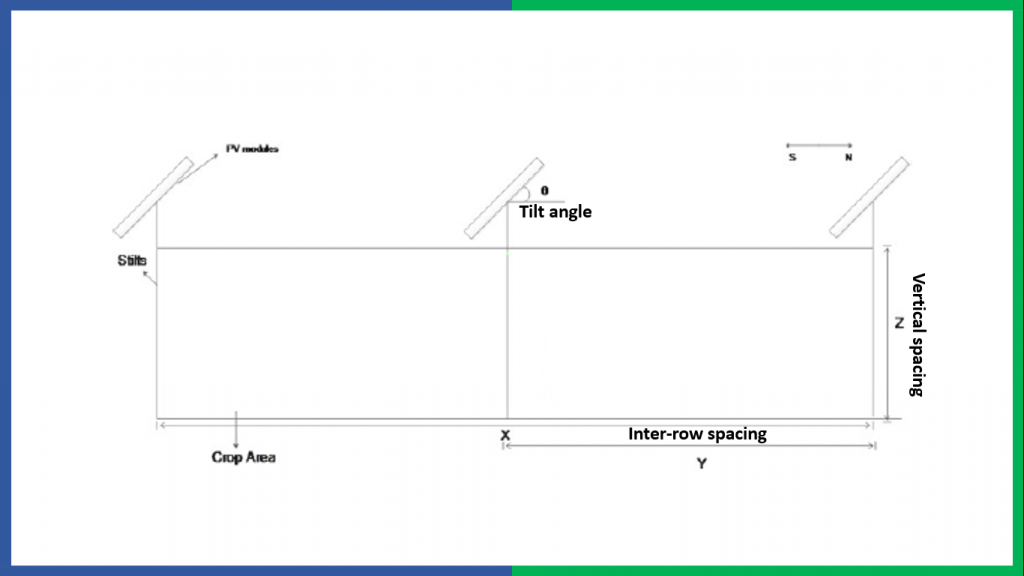
Source: Climatebiz
The only required modification to the solar structure is maintaining a vertical spacing of at least 8.2 ft from the ground — the inter-row and inter-panel spacing will increase according to the crop growing beneath the PV module.
Step 2.
The next step is simple — grow the plants between the inter-row spacing.
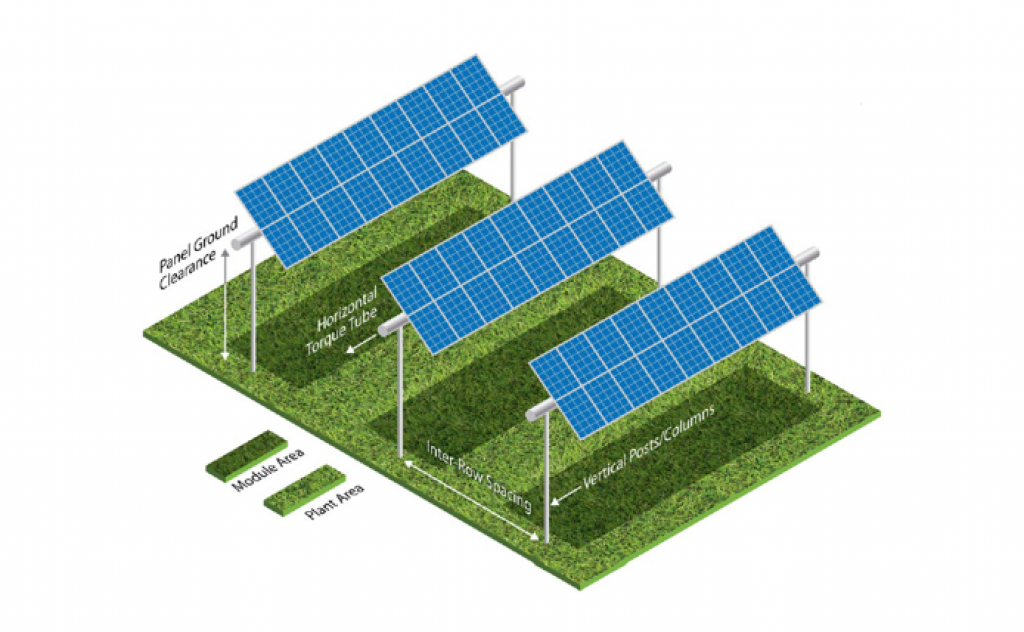
Source: NREL
Simultaneous Use Of Sunlight
Back to the original question — how does agrivoltaics work?
Suppose you’re in the Northern hemisphere. In this instance, your PV system will face south. The sun will rise from the east, striking the solar modules with solar irradiation and casting a shadow on the west side. Your plants will grow in this shadow.
As time passes, the sun will change its direction. At peak solar irradiation time, your plants will receive adequate sunlight and produces high-quality crops.
While this is happening, you’re also producing electricity from your solar system.
All of this is happening on a single piece of land!
Types Of Agrivoltaic Systems
According to the latest research, the market consists of three design variations with detailed techno-commercial feasibility. What’s more, each agrivoltaics system has its advantages and disadvantages.
1. Reinforced Regular Mount
The reinforced regular-mount system design is similar to the ground-mount system, with slight vertical and horizontal spacing modifications.
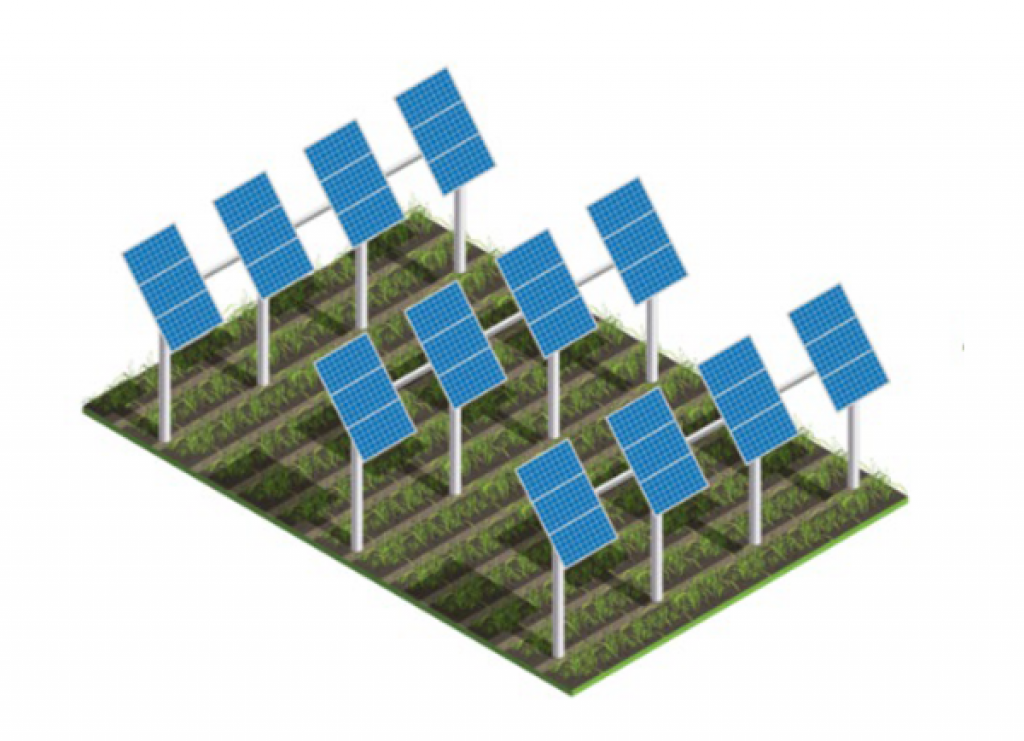
Source: NREL
2. Vertical Mount
In the vertical mount agrivoltaic design, solar modules are placed perpendicularly to the ground. As such, the ground coverage ratio (GCR) is negligible.
There is no requirement for inter-module spacing. Similarly, inter-row spacing is also at its lowest in this design.
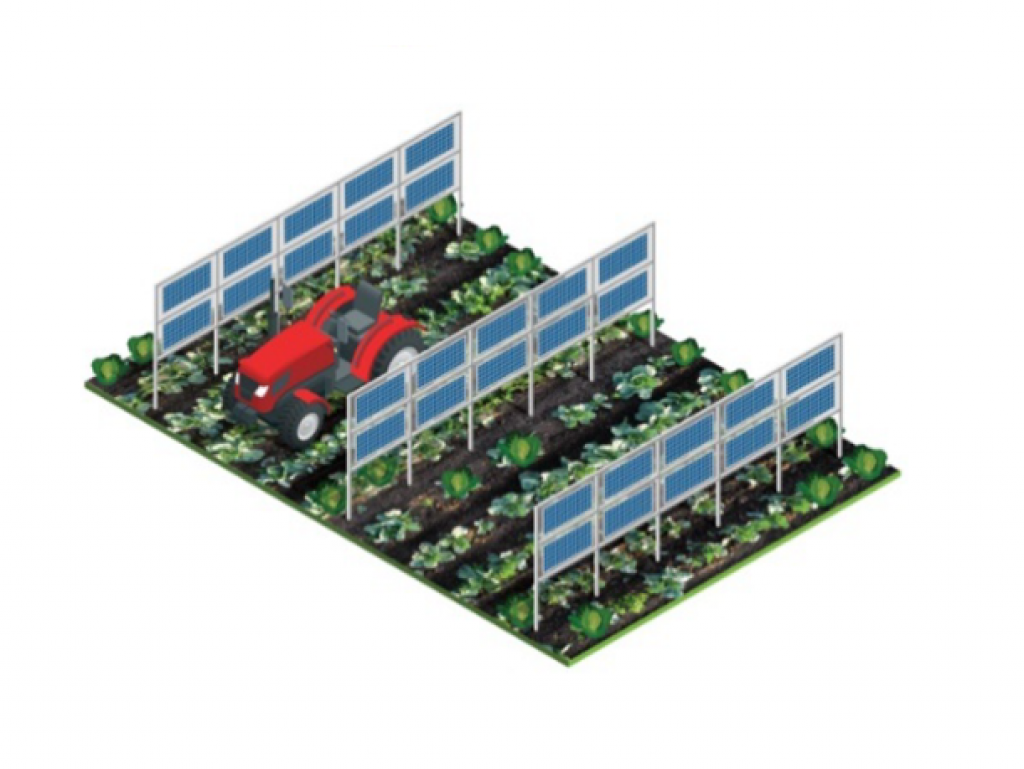
Source: NREL
3. Tracker Stilt Mount
This design adds solar irradiation tracking to the PV modules for maximum solar energy harvesting.
Spacing requirements are the same as a reinforced regular mount system.

Source: NREL
Now let’s look at some of the advantages and disadvantages of agrivoltaics.
5 Agrivoltaics Advantages
1. Increases Land Productivity
Suppose you’re growing wheat on your farm and your land productivity is 100%. Then you go ahead and add a solar system to the mix.
Here’s the kicker: you can do so without negatively affecting your agricultural productivity. So, in essence, you’re increasing the total productivity of your land through food and energy harvesting!

Source: MDPI
2. Reduction In Water Usage
Plants require water to prepare their food. According to the United States Department of Agriculture Economic Research Service (USDA ERS), 42% of fresh water is used annually for irrigation.
Transpiration
A characteristic of plants is transpiration. Transpiration is the process of water movement through a plant and its evaporation from aerial parts, such as leaves, stems, and flowers.
The amount of sunlight a plant receives affects the rate at which it transpires — excess sunlight increases water loss. This, in turn, increases a plant’s water demand.
In an agrivoltaic system, plants (outside of peak sun hours) are in the shade provided by the PV modules, and as such, the rate of transpiration is slowed.

Source: plantlet
The Proof Is In The Pudding
According to the University of Arizona, Chiltepin fruit production is three times better under the shade provided by solar modules, while cherry and tomato production is two times better.
What’s more, Jalapeno crops were observed to have used 65% less water within agrivoltaic systems.
In short, water usage reduction is promising with agrivoltaics.
3. Increased Solar PV Output Power
Solar PV modules are adversely affected by temperature losses. They produce maximum power at 77 degrees Fahrenheit (25 degrees Celcius). With the increase in temperature, power derates.
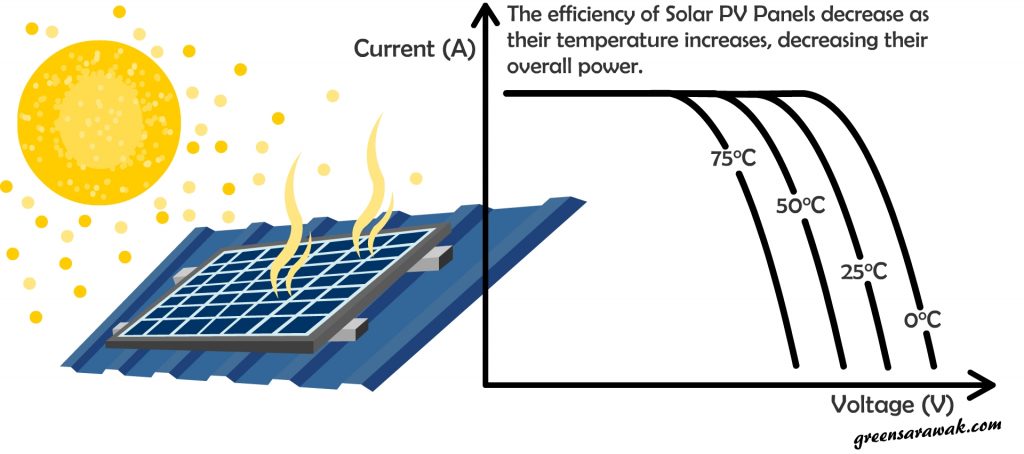
Source: GreenSarawak
Plants grown beneath PV modules help decrease the ambient temperature by 3 – 4 degrees Fahrenheit.
According to the University of Arizona, a 2% power production increase is observed when growing plants below a solar PV module.
Bifacial Solar Module
A bifacial solar module is another way to increase solar PV output. It works with both direct and diffuse solar irradiation. When direct solar irradiation reflects from plants, leaves, or any surrounding obstacle and strikes the bifacial part of a solar module, it’ll generate more power.
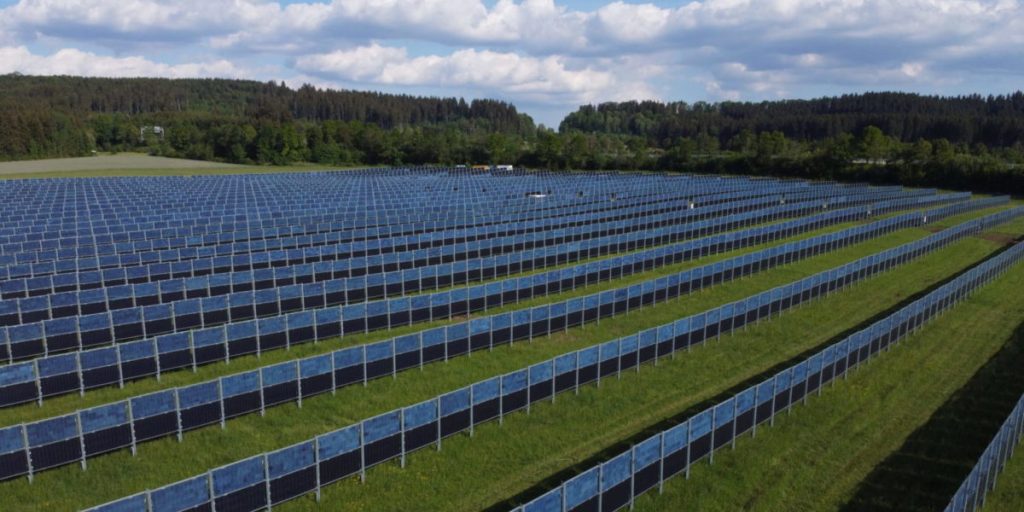
Source: Next2Sun
8-11% more production from bifacial solar PV modules is observed in agrivoltaic tomato farmland. Therefore, growing plants beneath solar PV modules and using bifacial solar increases power production.
4. Improvements To Farmers’ Health
Farming during hot, sunny conditions can be hazardous to a farmer’s health. Heatstroke and skin cancer are two very real dangers for those who carry out hard labor over months of sunny, hot weather.
Fortunately, solar modules provide ample shade for farmers to work in, giving them much-needed respite from the blazing hot sun.
5. Financial Return
Agrivoltaics provide higher profit margins compared to other solar technologies. Commercial benefits come in the form of productive crops and energy harvesting from the same land.
Electricity from solar fulfills household and farm requirements. You can channel surplus solar energy to the grid by setting up a grid-tied solar system.
Moreover, agrivoltaics promotes the use of electrical tractors and other electrical machines. It helps farmers reduce their carbon emissions and additional fuel costs.
In fact, agrivoltaics can achieve a 3.8% to 5.6% internal rate of return (IRR), proving more economical than other solar PV technology.
Crop-Related Benefits
Crop-related benefits, however, are still in the testing phase.
Crop selection is of the utmost importance in agrivoltaics. The following image illustrates crops well suited to agri-PV (green), crops that are in the testing phase (yellow), and crops that aren’t compatible with agrivoltaics (red)
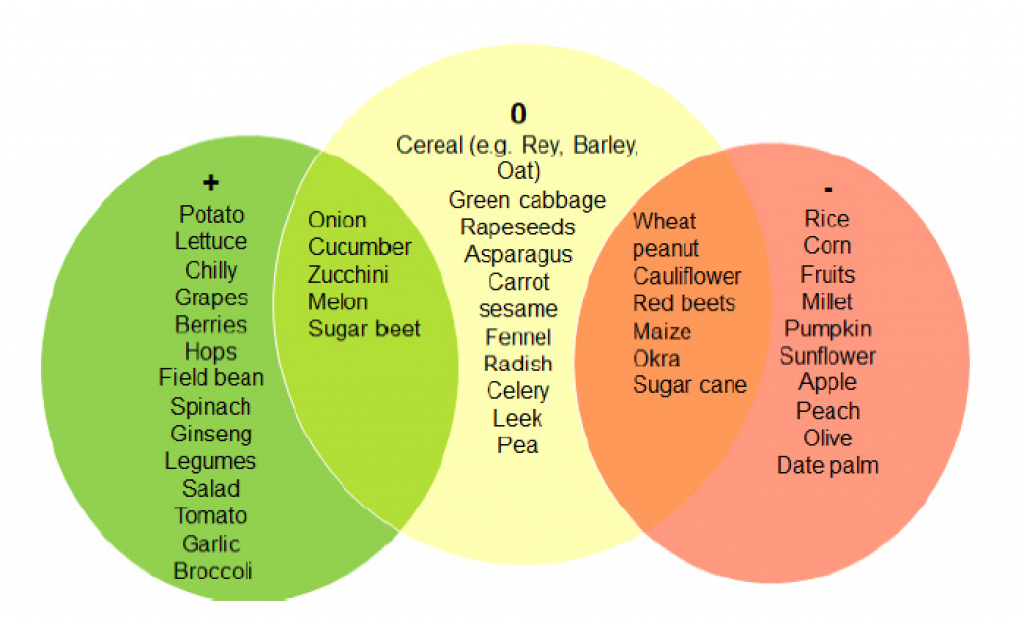
Source: MDPI
5. Agrivoltaics Disadvantages
1. Expensive
The capital cost for installing an agrivoltaic system is too high. Especially mechanical structure costs, it needs to be feasible for farmers.
2. Crop Rotation Is Required
If the same crop plantation continues for years, it will impact that part of the field. This is why crop rotation is such an essential part of agrivoltaics.
3. Many Farmers Unaware Of Benefits
The technology is relatively new, so many farmers or ranchers are unaware of its benefits.
4. Still In Development
Agrivoltaics is in the testing phase; it isn’t compatible with many crops.
5. Hidden Costs
There are hidden costs: O&M cost, opportunity cost, effect on warranty period of solar PV module, and the consequences of environmental factors on the PV structure and its replacement.
Final Thoughts
Everything in the world has its advantages & disadvantages; the same goes for agrivoltaics.
Nevertheless, agrivoltaics is gaining more and more traction — now is the time for investors and countries to harvest its commercial and environmental benefits.
Governments should be doing what they can to incentivize and even subsidize the process of farmers converting their land into agrivoltaic operations. Investors or the commercial sector can set up power wheeling contracts with farmers, which help them to purchase energy and carbon credits.
Hopefully, before this decade ends, agri-PV will be a more commonplace practice and topic of discussion topic, much like conventional solar systems.
Should you have further queries about the advantages and disadvantages of agrivoltaics, please reach out to us through our community page!

